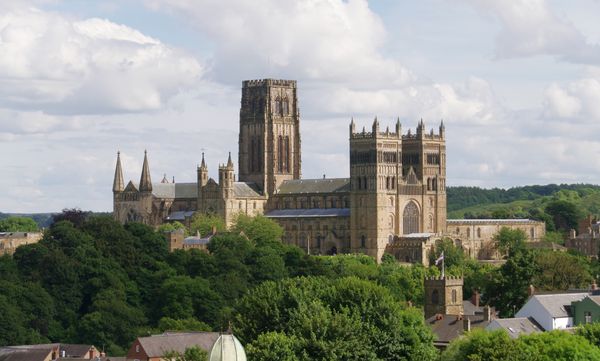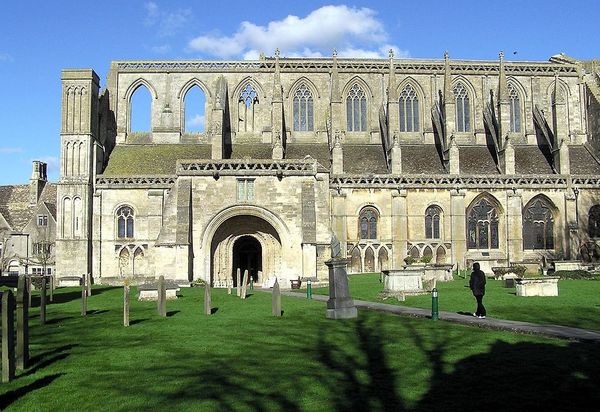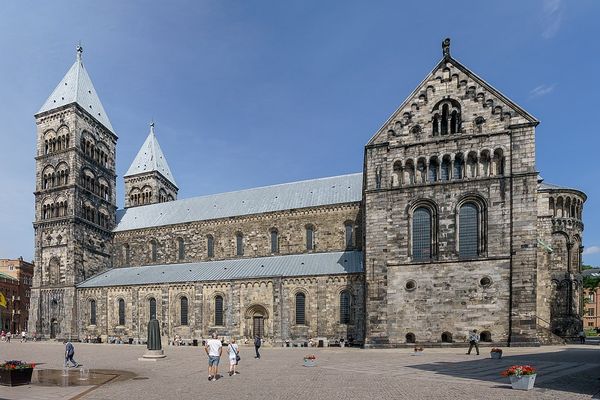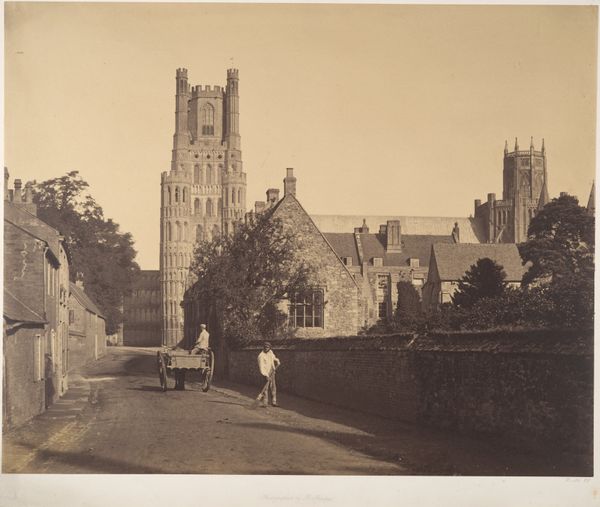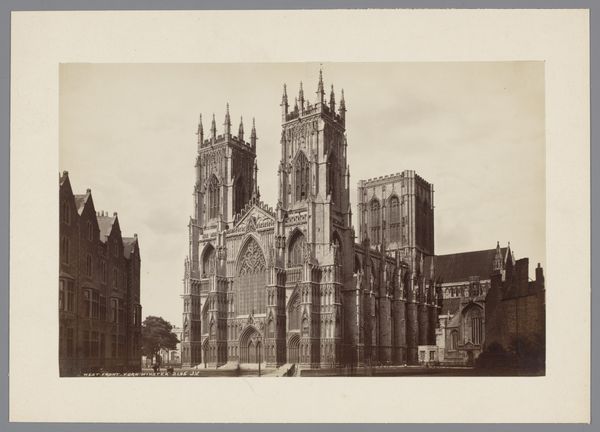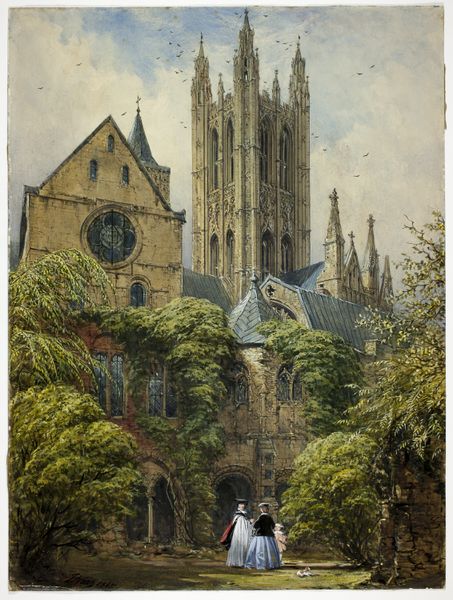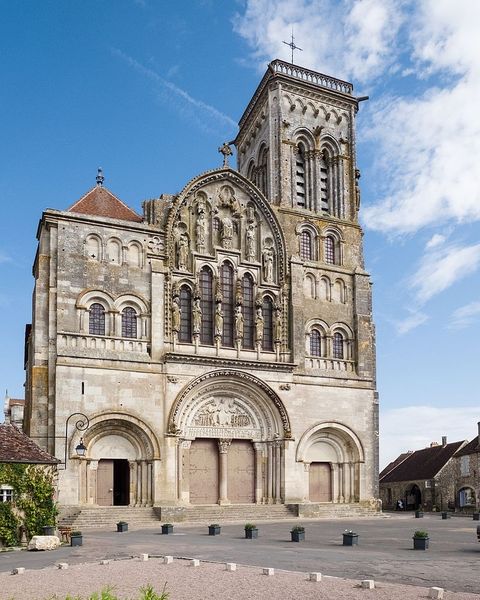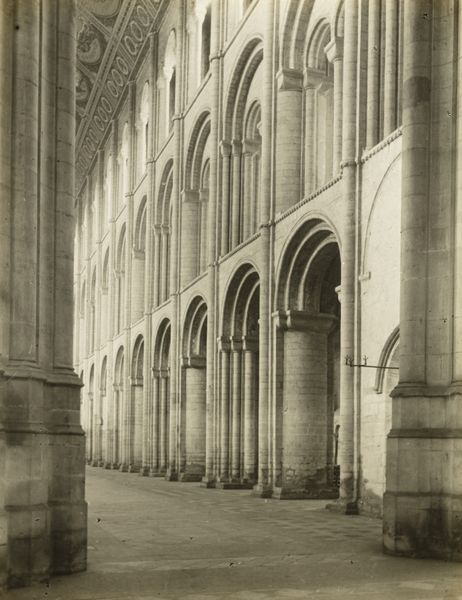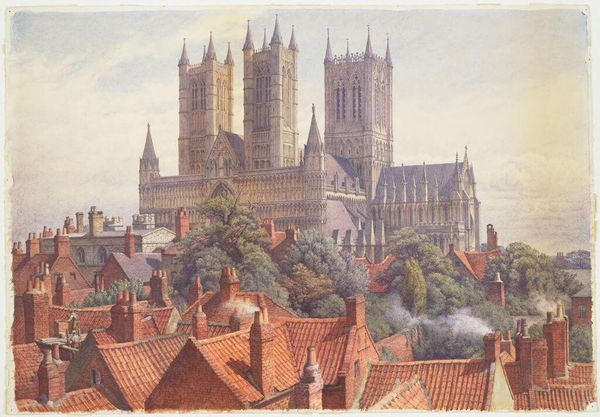
architecture
#
medieval
#
cityscape
#
landscape
#
romanesque
#
architecture
Copyright: Public domain
Durham Cathedral in England was constructed using Romanesque architecture between approximately 1000 and 1250 AD. The cathedral’s massive form and weight are profoundly grounded, creating a deep sense of permanence and imposing power. The towers, punctuated by repetitive arched windows, extend skyward, while the horizontal lines of the structure give a sense of grounded stability. The rough-hewn stones, composed in regular patterns, reveal the hand of the builders, while the dark recesses within the arches contrast with the illuminated surfaces to create a play of light and shadow, heightening the cathedral’s texture. The building's architecture utilizes a semiotic system where the physical structure signifies a connection between the earthly and divine realms. The imposing scale and repetitive patterns of the arches symbolize the eternal nature of religious doctrine, with the cathedral acting as a monumental challenge to fixed meanings. It serves as a powerful statement of faith and architectural innovation.
Comments
No comments
Be the first to comment and join the conversation on the ultimate creative platform.
